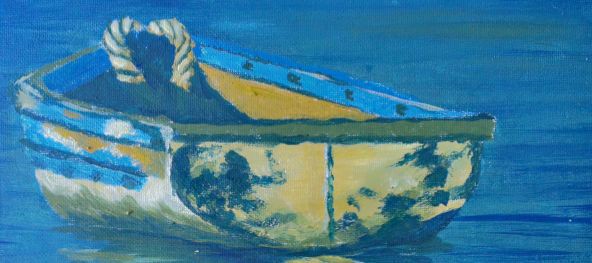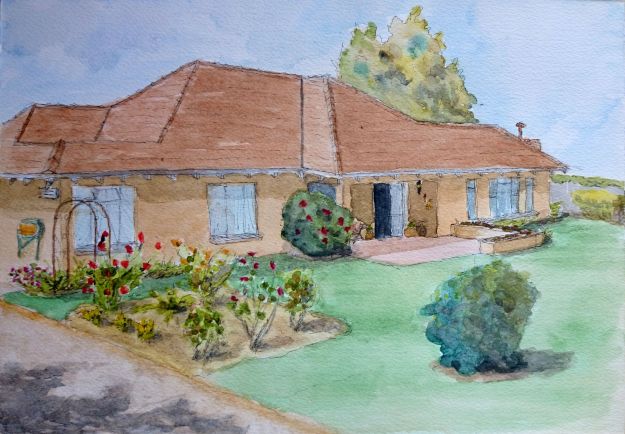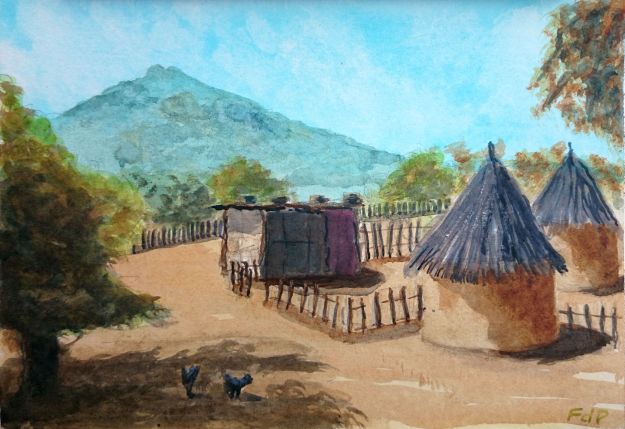I started with an A3 sketch of my house recently and finished it this morning. It turned out to be more that just a sketch as I worked some of my recently acquired watercolour painting skills into the work. The result is presented below. I am really satisfied with the finished product. IT is not so obvious in the image, but the shadows in the foreground and those on the building just work. I did this one for my wife. I wonder how this will look in washed acrylics.
Monthly Archives: March 2015
Gwakwani, a villiage in Venda
Our department at work is involved with a community development project in northern Limpopo, in the area formerly known as Venda. The village, Gwakwani, is extremely remote and the roads can almost not be called roads. It is a really wild piece of Earth with leopards roaming wildly and the river (from which they get their water) teeming with crocodiles!
I took some photos on a recent trip to Gwakwani and started to work on some of these in the last week. The image below was my first attempt, being watercolour on 300 gsm paper. It was OK, but lacking the brightness that I was looking for and that was present in the reference photo.
So, I thought about the possibility of using acrylics like watercolours and read up about it. I found out that it was possible and then painted the image below using my Windsor & Newton Galleria Acrylics on 300 gsm watercolour paper. In this case I used my acrylics with lots of water to create washes like you would usually do with watercolour, only the colour were more lively and intense. I am still not exactly satisfied with the results, but it was better that the first painting.
There was another reason why I was interested in the “acrylics as watercolour” option, and that was that I was getting confused between using my acrylics and my watercolours. Traditionally I would use the acrylics heavy (like oil paint) and paint from dark to light, while I would use the watercolours in thin, transparent layers, painting from light to dark. I was in the process of getting the watercolours under control, but felt at a loss when I went back to the acrylics. Now I can use the same technique – painting from light to dark and in thin, transparent layers – with both mediums, without suffering from brush-confusion. I could still apply the paint in heavy, opaque strokes to finish the painting, but at least the process in now sorted out.



